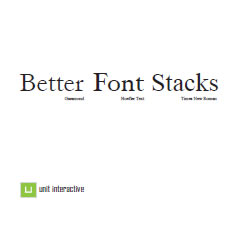The best way to learn something may be – keep that thing near to you whenever you want that, can you carry your books all the time with you to get some help in trouble situation? Guess no! So the alternate might be E-books, the complete digitization of your printed material. E-books are compact and can be carried easily wherever you go either with your laptop or mobile, more advance, use any file sharing service to get these e-books available anywhere.
In this article we are going to cover e-books related to designing work or blogging and off-course which are freely available to you. These two topics are quite hot favorite for the people, as these have a lot of opportunities in monetary terms and fame as well. Following 20 e-books are written by the professionals and the masters of their field so you will get the detailed observation of their views upon every topic.
These e-books will provide you the accurate information regarding topics neither any wastage nor you will find these boring. Some e-books out of these might be considered as out dated but trust us; these will cover the relevant topics to the current time whether these have some year’s earlier publication date. Use the title to get the free download of these E-books
Introduction to Good Usability by Peter Pixel
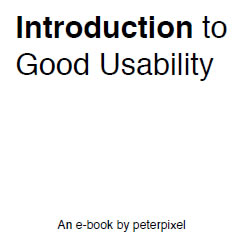 This is by no means a complete guide or solid set of rules, but it is definitely a good start. This guide is especially handy if you haven’t done a lot of webdesign yet or if you are involved in webdesign but don’t do any of the real work. We hope to shed some light on some common interface elements and mistakes people often make with them.
This is by no means a complete guide or solid set of rules, but it is definitely a good start. This guide is especially handy if you haven’t done a lot of webdesign yet or if you are involved in webdesign but don’t do any of the real work. We hope to shed some light on some common interface elements and mistakes people often make with them.
Web Accessibility Checklist by Aaron Cannon
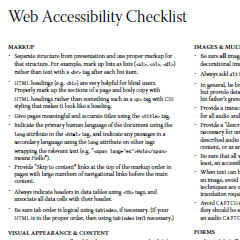 Written by Aaron Cannon, blind web developer and accessibility consultant.Aaron explains in his article “The Accessibility Checklist I Vowed I’d Never Write”, that the problems with a “simple checklist that, when followed, will give you an accessible site without fail.”
Written by Aaron Cannon, blind web developer and accessibility consultant.Aaron explains in his article “The Accessibility Checklist I Vowed I’d Never Write”, that the problems with a “simple checklist that, when followed, will give you an accessible site without fail.”
Better CSS Font Stacks by Nathan Ford
Faster, and More Secure Webfonts by Bram Pitoyo
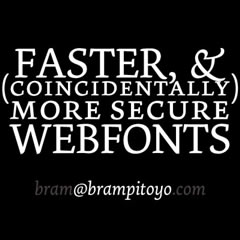 Bram Pitoyo’s ebook takes the top layer off font embedding and shows us how things work, and ultimately how to improve performance and make it more secure.
Bram Pitoyo’s ebook takes the top layer off font embedding and shows us how things work, and ultimately how to improve performance and make it more secure.
Web Designers Success Guide
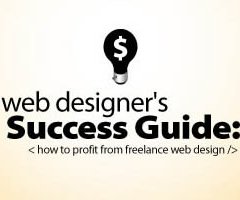 Web Designer’s Success Guide is the definitive guide to starting your own freelance Web design business. In this book, Kevin Airgid gives designers a step-by-step instructions on how to achieve the following: Transition from full-time to self-employment, Freelance on the side to make additional income, Find new clients and keep them coming back for more.
Web Designer’s Success Guide is the definitive guide to starting your own freelance Web design business. In this book, Kevin Airgid gives designers a step-by-step instructions on how to achieve the following: Transition from full-time to self-employment, Freelance on the side to make additional income, Find new clients and keep them coming back for more.
Knock Knock by Seth Godin
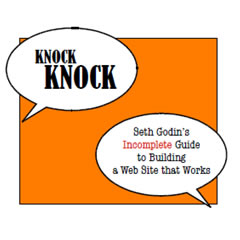 Knock Knock is now available for you to read for free. It’s a short take on how to use the new online marketing tools to make any website work more effectively. You’ll notice on the second page of the PDF that there’s a link that makes it easy to contribute to the Red Cross.
Knock Knock is now available for you to read for free. It’s a short take on how to use the new online marketing tools to make any website work more effectively. You’ll notice on the second page of the PDF that there’s a link that makes it easy to contribute to the Red Cross.
Guerrilla Freelancing by Mike Smith
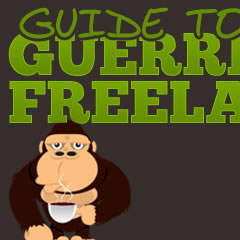 This will help new freelancers in the right direction as well as give them insight into the benefits and drawbacks of freelance life, some things you must be aware of as well as some guerrilla marketing tactics to get them going.
This will help new freelancers in the right direction as well as give them insight into the benefits and drawbacks of freelance life, some things you must be aware of as well as some guerrilla marketing tactics to get them going.
A Concise Guide to Archiving for Designers by Karin van der Heiden
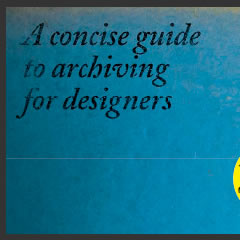 AIGA worked with the Dutch Archives for Graphic Designers (NAGO) in the Netherlands to publish an English version of A Concise Guide to Archiving for Designers. The guide provides designers with the proper ways to store and describe their collections in 10 short chapters.
AIGA worked with the Dutch Archives for Graphic Designers (NAGO) in the Netherlands to publish an English version of A Concise Guide to Archiving for Designers. The guide provides designers with the proper ways to store and describe their collections in 10 short chapters.
Who’s There? by Seth Godin
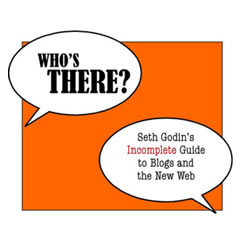 Who’s There is not an ebook about how to write better or how to follow the traditional conventions about formatting and building a blog. Instead, he talks about how building a blog asset can have a spectacular impact on you, your career, your organization and your ideas.
Who’s There is not an ebook about how to write better or how to follow the traditional conventions about formatting and building a blog. Instead, he talks about how building a blog asset can have a spectacular impact on you, your career, your organization and your ideas.
Time Management for Creative People by Mark McGuinness
 Delivering time management training and coaching for hundreds of creative people has taught me a lot about what it takes to get original work done in the midst of the demands and distractions of the 21st century workplace.
Delivering time management training and coaching for hundreds of creative people has taught me a lot about what it takes to get original work done in the midst of the demands and distractions of the 21st century workplace.
How To Be Creative by Hugh MacLeod
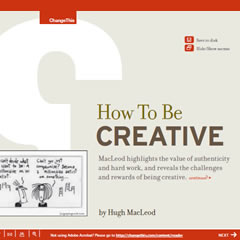 Written by HughMacLeod, an advertising executive and popular blogger with a flair for the creative. He offers his 26 tried-and-true tips for being truly creative with each point being illustrated by a cartoon drawn by the author himself.
Written by HughMacLeod, an advertising executive and popular blogger with a flair for the creative. He offers his 26 tried-and-true tips for being truly creative with each point being illustrated by a cartoon drawn by the author himself.
Why design? by AIGA
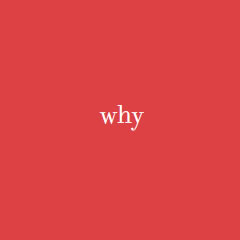 The “Why design?” booklet outlines the role of design in business strategy. It seeks a common framework for why design adds value to clients’ interests. It defines the power of Designing, a larger concept that includes strategy as well as artifacts across a variety of disciplines.
The “Why design?” booklet outlines the role of design in business strategy. It seeks a common framework for why design adds value to clients’ interests. It defines the power of Designing, a larger concept that includes strategy as well as artifacts across a variety of disciplines.
The Design Funnel: A Manifesto for Meaningful Design by Stephen Hay
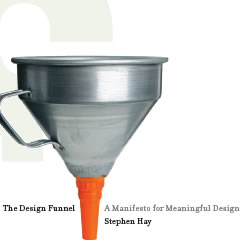 From the authour of this manifesto, Stephen Hay: “Would you like a process which would help translate the often vague, unclear wishes of your clients (and yourself, for that matter) into a clear and solid basis for your design? This manifesto will show you how.”
From the authour of this manifesto, Stephen Hay: “Would you like a process which would help translate the often vague, unclear wishes of your clients (and yourself, for that matter) into a clear and solid basis for your design? This manifesto will show you how.”
How to Start a Business Blog by Michael Martine
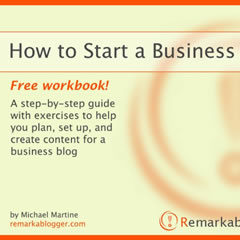 How to Start a Business Blog, by Michael Martine, is a step-by-step-guide to help you plan, set-up, and create content for a business blog.
How to Start a Business Blog, by Michael Martine, is a step-by-step-guide to help you plan, set-up, and create content for a business blog.
Forty’s Pocket Guide to SEO
 Pocket Guide to SEO contains everything you could want to know about SEO. Buried deep inside its pages you’ll find tips, tricks, general information about search engines, and how you can make them work for you – in a completely ethical way, of course.
Pocket Guide to SEO contains everything you could want to know about SEO. Buried deep inside its pages you’ll find tips, tricks, general information about search engines, and how you can make them work for you – in a completely ethical way, of course.
Typo Tips – Seven Rules for Better Typography by Erik Spiekermann
Web Font User Guide by FontShop
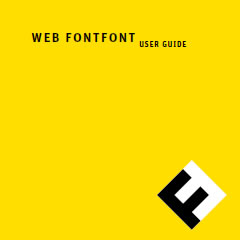 Section C contains information for system administrators about which configuration changes may be necessary to successfully serve webfonts from your web server and, finally, section D outlines some issues visitors of your website may experience in connection to webfonts and may assist site owners in answering webfont-related support requests.
Section C contains information for system administrators about which configuration changes may be necessary to successfully serve webfonts from your web server and, finally, section D outlines some issues visitors of your website may experience in connection to webfonts and may assist site owners in answering webfont-related support requests.
The Woork Handbook by Antonio Lupetti
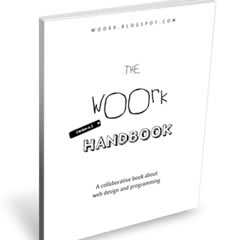 The Woork Handbook is a free eBook about CSS, HTML, Ajax, web programming, Mootools, Scriptaculous and other general topics about web design.
The Woork Handbook is a free eBook about CSS, HTML, Ajax, web programming, Mootools, Scriptaculous and other general topics about web design.
HTML5 Quick Learning Guide by freehtml5templates.com
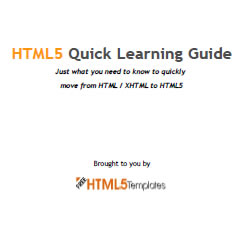 This guide introduces you to just the main elements of HTML5 that you’ll probably want to use right away. This guide is for those who want to get the basics figured out first, and worry about the finer details later on.
This guide introduces you to just the main elements of HTML5 that you’ll probably want to use right away. This guide is for those who want to get the basics figured out first, and worry about the finer details later on.
Type Classification eBook by Jacob Cass
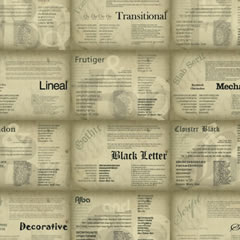 These are the basic foundations of what you need to learn to learn typography and it is essential for any designer to know how to classify type. This book goes through the 10 type classifications with a brief history as well as the key characteristics of each.
These are the basic foundations of what you need to learn to learn typography and it is essential for any designer to know how to classify type. This book goes through the 10 type classifications with a brief history as well as the key characteristics of each.

